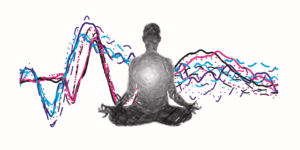
What is Mindfulness
By John M. de Castro, Ph.D.
“Mindfulness is the aware, balanced acceptance of the present experience. It isn’t more complicated than that. It is opening to or receiving the present moment, pleasant or unpleasant, just as it is, without either clinging to it or rejecting it.” ~Sylvia Boorstein
Mindfulness has become a buzzword that is used in many contexts with many different meanings. There is no single definition that is agreed upon by the research and practitioner communities. In fact, there are many different definitions. Arguably the most commonly used definition and the one that I prefer, is the definition proposed by Jon Kabat-Zinn. “Mindfulness means paying attention in a particular way; on purpose, in the present moment, and nonjudgmentally.”
This definition contains a number of important components that help to better understand exactly what mindfulness is. Firstly, mindfulness is “paying attention.” But, not just letting the mind settle somewhere passively, but “on purpose.” That makes it an active process; a willful choice. With mindfulness, the mind is not aimlessly wandering. Rather it is focused.
The problem comes up, though, that our minds are unruly. In fact, the mind is often referred to as a “monkey mind,” implying that it jumps around in an untamed and unruly fashion. This is without a doubt true. Matt Killingsworth sampled people’s thinking at unpredictable times during the day and discovered that 47% of the time people’s minds were off-topic, that is, they were thinking about something else other than what was going on at the moment. They were not mindful almost half the time.
It is often a shock for people to discover that a large amount of the time they are not controlling their minds. Rather, the mind appears to be some extent controlling what they are experiencing. Most people suffer from the illusion that they are in control. So, it is eye opening to discover that frequently they are not. To get control of the mind and keep it paying attention to what is going on in the moment requires a degree of effort. But, even then the mind tends to wander off, thinking about past events, planning for the future, or simply day dreaming. Fortunately, mind wandering can be reduced with practice. But, even highly trained mindfulness practitioners have frequent lapses where the mind goes off by itself into topics far removed from the present. So, no one should expect to be able to completely control the mind, just hope to control it better.
A second important aspect of the definition is that, in mindfulness, attention is directed to what is occurring in the “present moment.” That seems straightforward until one tries to define exactly what portion in time is the present moment. Our first inclination is to think of the present moment as instantaneous, exactly this particular moment only. But with a little reflection it becomes obvious that what we experience as the present moment actually extends back in time a short ways and also forward slightly into the future. If it didn’t extend back in time we could never see motion, as we wouldn’t be aware of a change from a previously seen position. For that matter, we wouldn’t be able to hear a full word, only the immediate sound. Obviously this is not the case, because the present moment actually contains a little bit of the past. Demonstrating that the present actually extends a little into the future is more difficult and subtle to detect. But, if we interrupt speech in the middle of a sentence, you will find that you seemingly “hear” the next syllable or word that the mind is expecting to appear or if we interrupt a movie you seemingly “see” the next frame.
The total amount of time constituted by the present moment is difficult to precisely define. Marc Wittmann asserts that before we can answer that question of how long is now we must first define exactly what we mean by the present moment. He identifies three different ideas of the present moment; functional moment, experienced moment, and mental presence. The most pertinent for our discussion of mindfulness is the experienced moment, the subjective present. It is an experienced now within an ongoing stream of events. For example, while listening to music a note does not stand alone in consciousness but is joined by the prior note and the expected future note. In speech, each word is perceived in reference to past and expected words, as in the phrase “how are you”. When we hear “are” we process it recognizing that it’s in reference to a question, “How” and due to our learning we also experience the “are” with the expectation of a following word “you”. It’s been estimated that the experienced moment lasts somewhere up to 3 seconds. So, when we refer to present moment awareness we are referring not to an instant but to the approximately 3 seconds that we experience as the present.
A third important aspect of the definition is that, in mindfulness there is no judgment of experience. This indicates that when we are mindful we are simply experiencing things as they are without evaluation. It is important to note that it is value judgments that are absent. Making judgments about the likely course of events and what actions are needed is actually a part of mindfulness. If we’re driving mindfully we are constantly judging whether we need to slow down or turn to avoid hitting another car, whether we can safely make it through a traffic light that is about to change, whether a car may pull out in front of us. If we are driving mindfully we’re making these judgments but totally aware the whole time of what is happening.
The non-judgmental aspect of mindfulness involves value judgments about what we’re experiencing. Things are not good or bad, pleasant or unpleasant, liked or disliked, happy or sad, worthwhile or worthless, etc. They simply are. Although seemingly simple, this is actually devilishly difficult to do. The mind has been trained pretty much since birth to judge everything. This is actually quite good and adaptive, allowing us to decide if we should approach and acquire things we need or to avoid things that could do us harm. But, the judgment goes on even when it has little consequence toward survival. So, we see another person and classify them as attractive, or smart, or boring, or obnoxious, or rich, or a fool, or friendly, or a rival, etc. We hear a loud sound and we immediately think it’s threatening, or unnecessary noise, or enjoyable, or someone being inconsiderate, etc. We taste a food and immediately think that it’s delicious, or sour, or nauseating, or healthful, etc. We are constantly judging.
Being non-judgmental requires quieting the mind. If left to itself, the mind will always judge. So, to be mindful we need to shut off the evaluating chatter. Just experiencing everything as it is, as a pure and simple experience. It’s actually quite amazing what happens when judgment is turned off. Suddenly, we begin to appreciate even the simplest of things which begin to shine and stand out in their own unique way. Another person is simply seen as another human being with needs and desires, and a consciousness, just like us, a reflection of our own humanness. An odor can be experienced as a unique sensation that will never be repeated exactly the same again. Just breathing can be experienced fully as a series of movements and sensations that arise and fall away and the repeat over and over again, automatically, without direction or thought, each time revitalizing and nourishing our physical being, leading to a recognition of physiology at work. These are just some of the fruits of mindfulness.
It is very difficult to stop the judging even for brief periods of time. But, again practice comes to the rescue. Over time, if the effort is expended, judging slowly decreases and stops for longer and longer periods of time. Don’t expect to ever be able to stop judging completely. This would be a battle with you mind that can’t be won. Just expect that you can become better at looking at things as they are without value judgments and be able to maintain it for a longer period of time.
The final aspect of the definition that needs amplification and discussion is the notion that mindfulness involves paying attention in “a particular way.” Unfortunately, this is a rather ambiguous phrase that actually refers to a very important component of mindfulness. The “particular way” refers to attention primarily to immediate sensory experience. It could be focused on a particular component, aspect, or thing, or it could be broadly on all that is immediately present. The key is that it is a total appreciation of what is without any attempt to hold onto it, letting it arise, and fall away without grasping at it or attempting to change it. The experiences can include feelings, bodily sensations, and the surrounding environment and even thoughts. But observing the thoughts as just another thing arising, and falling away, with no attempt to hold onto them, elaborate on them, judge them, or associate them with any other thoughts just letting them flow through awareness and fall away like a cloud passing over the horizon. In other words, thinking can be mindful if we are completely aware of what we are doing and not getting carried away and lost in the thoughts.
This is a rather idealized conception of mindfulness. In practice, one can be very mindful without coming even close to this description. This discourse should be looked on as describing the model, the ideal, with it understood that reality will in fact be a diluted or compromised version of this ideal. One can be very mindful and still judge the experience, as long as there’s a recognition that that is what is happening. One can be very mindful and still bring in memories from the past or plans for the future, as long as there’s an awareness that these are not an essential part of the experience but the minds embellishments. One can be very mindful and still
Try to maintain a feeling or keep an enjoyable experience going, as long as one recognizes that what you are doing is simply another part of present moment experience. It is even possible, albeit difficult, to daydream mindfully as long as you are completely aware that this is what you’re engaging in completely under willful control. In other words, mindfulness need not be perfect, it only experiencing things as they are, in the present moment, without judgment.
One problem with the definition is that it specifies the processes involved in mindfulness but neglects to specify exactly what entity is being mindful. It doesn’t specify who or what is attending, who or what is producing the purpose, who or what is not judging, who or what is having the immediate experience. When these questions arise, it’s a sign that the issue has moved from mindfulness to the spiritual side of mindfulness, who or what is aware. This is not the place for a discussion of these aspects of mindfulness. But, it is important to recognize that this definition and description of mindfulness only scratches the surface. There are deeper levels to mindfulness to be explored.
“Mindfulness is the process of actively noticing new things. When you do that, it puts you in the present. It makes you more sensitive to context and perspective. It’s the essence of engagement.” – Ellen Langer
CMCS – Center for Mindfulness and Contemplative Studies
This and other Contemplative Studies posts are also available on Google+ https://plus.google.com/106784388191201299496/posts









